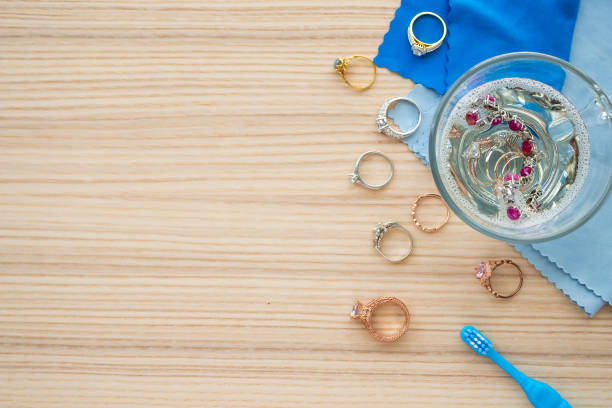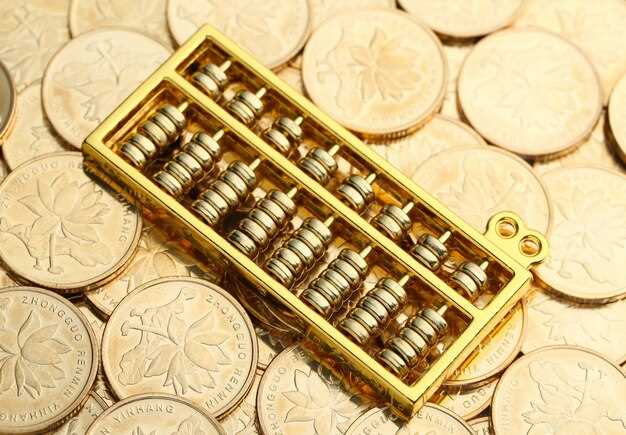Rejuvenate your precious gold jewelry with a simple and safe solution: use a mixture of warm water and mild dish soap. This gentle combination will remove dirt and oils without damaging the surface of the gold. Ensure to mix the solution thoroughly, creating a light sudsy bath for your pieces. Avoid using harsh chemicals, which can corrode the metal and stones, diminishing the inherent shine of your jewelry.
After submerging your gold items, gently scrub them with a soft toothbrush. Pay particular attention to intricate settings and hard-to-reach areas where grime can accumulate. The bristles of the toothbrush help to dislodge particles that your initial soak might miss. Always use a soft brush to prevent any scratches on the delicate surface of the gold.
Once you’ve thoroughly cleaned each piece, rinse them under warm running water. It’s crucial to be cautious and make sure any smaller pieces don’t slip down the drain. After rinsing, swiftly dry each piece of jewelry with a soft, lint-free cloth. This step is essential to prevent any possible water spots or streaks that can affect the appearance.
To maintain their luster, regularly polish your gold jewelry using a specialized cloth designed for gold. This will preserve the sheen and prevent any tarnish or discoloration over time. Store your cleaned gold jewelry separately in a soft pouch or a lined box. This ensures they remain protected from scratches and other potential damage, keeping them in pristine condition for years to come.
Understanding Gold Jewelry Composition
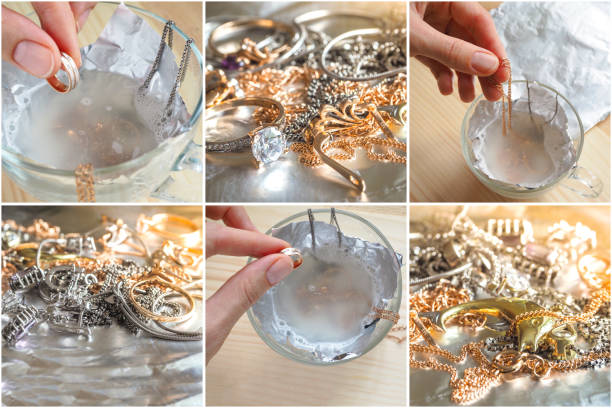
Recognize varying gold compositions to properly care for and clean your jewelry. Gold purity is measured in karats, with 24k being pure gold but often too soft for jewelry. Thus, jewelers alloy it with other metals like silver, copper, or zinc to enhance durability and create different color variations.
- 18k Gold: Contains 75% gold. It offers a good balance between purity and strength, suitable for most high-end jewelry pieces.
- 14k Gold: Composed of 58.3% gold. This composition is popular for its durability, ideal for daily wear.
- 10k Gold: Features 41.7% gold and is highly robust, although it may tarnish more easily due to higher alloy content.
Consider the type of gold when choosing a cleaning method. For instance, white gold often has a rhodium plating that demands extra care to maintain its luster. Conversely, rose gold contains more copper, which can react differently to cleaning agents.
Avoid harsh chemicals that might damage the surface or cause discoloration, especially in lower karat pieces. Opt for gentle, non-abrasive cleaning solutions tailored to your jewelry’s specific composition.
- Identify the karat of your jewelry; it influences how you should approach its maintenance.
- Choose appropriate cleaning techniques according to the specific alloys mixed with the gold.
Understanding gold composition empowers you to make informed decisions about maintaining the brilliance and integrity of your treasured pieces.
Identifying Karat and Purity Levels
Determine the karat of your gold jewelry by examining the hallmark, usually stamped on an inconspicuous part of the item, such as the clasp or inner band. Common markings include 10K, 14K, 18K, and 24K, where the number signifies the parts of gold present per 24 parts. A 24K mark indicates pure gold, while lower karat values signify alloys with other metals, which enhance durability.
Understand that the purity level of gold jewelry is essential for proper care. Pure 24K gold is soft and prone to scratches, so handle it with care. Jewelry with lower karat values, like 14K or 10K, is more robust because of the metal alloys mixed with the gold. These pieces are less prone to bending or wear and can withstand more frequent cleaning.
To confirm if your gold jewelry has the stated karat, consider using a testing kit with acid solutions corresponding to different karat levels. Alternatively, consult a professional jeweler for precise identification, especially for pieces with ambiguous marks or signs of wear affecting the hallmark’s visibility. Armed with accurate information on your jewelry’s karat and purity, you can tailor cleaning methods to best preserve its beauty and longevity.
Recognizing Common Alloys and Coatings
Determine the specific type of alloy or coating your gold jewelry has by checking for hallmark stamps indicating its composition, such as 10K, 14K, or 18K gold. This information is crucial for understanding its purity: 18K gold, for instance, contains 75% gold, making it more delicate than 10K, which includes more alloy metals for durability.
Gold jewelry often features a layer of plating over base metals like copper or silver to enhance its aesthetic appeal. A common coating is rhodium, which imparts a reflective white finish to white gold. Recognize rhodium by its bright sheen and consider re-plating after extended wear to maintain its luster.
Another frequent alloy is rose gold, achieved by adding copper, giving it a distinct pink hue. Adjust cleaning methods accordingly; avoid harsh chemicals that could tarnish its shine. Use a gentle, non-abrasive solution, maintaining the color integrity without compromising the surface.
Palladium white gold alloys offer a hypoallergenic alternative to traditional nickel-based ones, recognizable by their faint grey cast. For these, ensure any cleaning products used are non-corrosive and specifically designed for use on mixed-metal jewelry.
Always carry out a spot test with any cleaning material you choose to ensure no adverse reactions. By understanding your jewelry’s unique composition, you effectively tailor maintenance routines, safeguarding both aesthetic and structural integrity.
Impact of Composition on Cleaning Methods
Select the appropriate cleaning method by considering the gold jewelry’s composition. Pure gold, being soft, warrants gentle cleaning with a solution of mild soap and warm water. Use a soft brush to clean, avoiding abrasive tools that may scratch.
When dealing with gold alloys, recognize diverse requirements. White gold jewelry, often rhodium-plated, should not endure exposure to harsh cleaning agents that can strip the plating. Instead, clean with a damp cloth and dry immediately. Yellow and rose gold alloys can typically handle a mild solution similar to pure gold, but verify the care instructions specific to gemstone settings.
Examine the stone settings in your gold jewelry, as certain gemstones (like opals and pearls) are sensitive to water and chemicals. Thus, clean these pieces using a dry, soft cloth instead. For detailed guidance, reference the table below, outlining the most common gold jewelry compositions and recommended cleaning methods.
| Gold Composition | Recommended Cleaning Method |
|---|---|
| Pure Gold (24k) | Mild soap and warm water with a soft brush |
| Yellow Gold (18k, 14k) | Mild soap and warm water; avoid abrasive tools |
| White Gold | Gentle wiping with a damp cloth; avoid acidic cleaners |
| Rose Gold | Soap and warm water; soft brushing if needed |
| Gold with Sensitive Stones | Dry, soft cloth to avoid moisture or chemical damage |
For safe jewelry care, adapt techniques based on the jewelry’s material and gemstone delicacy. Tailoring your cleaning approach will maintain shine and prevent damage, ensuring lasting brilliance of your gold pieces.
Home Cleaning Techniques for Gold Jewelry
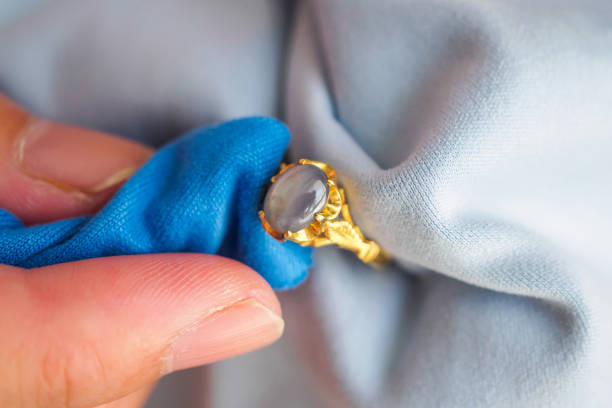
Mix a few drops of mild dish soap with warm water in a small bowl. Submerge your gold jewelry for 15-20 minutes, allowing the solution to loosen dirt and grime. Use a soft-bristled toothbrush for scrubbing gently, focusing on intricate areas to remove debris. Rinse the jewelry under warm running water to eliminate soap residues. Pat dry with a soft, lint-free cloth to restore its shine.
Baking soda offers an excellent alternative for deeper cleaning. Combine one tablespoon each of baking soda and water to form a paste. Apply the paste to your jewelry and scrub lightly with a toothbrush. Rinse thoroughly and dry with a soft cloth to avoid water spots.
For tarnish removal, make a paste using equal parts of vinegar and baking soda. Coat your gold pieces with the mixture, letting it sit for about 10 minutes. Rinse thoroughly under warm water and dry completely. This method not only removes tarnish but also restores luster.
For intricate designs or pieces with gemstones, use a cotton swab dipped in a diluted alcohol solution (one part alcohol to five parts water) to clean the hard-to-reach areas. Focus on the undersides and settings. Rinse with plain water and dry with a cloth.
A professional gold polishing cloth can enhance the brightness of your gold jewelry. Simply rub the cloth gently over the surface, paying special attention to any dull areas. The polishing agents in the cloth help in maintaining the gold’s natural shine.
Preparing a Safe Cleaning Solution
Choose a mild dish soap for creating a safe cleaning solution for your gold jewelry. Ensure that the soap is free of perfumes and dyes to prevent any potential damage or residue on the pieces.
In a small bowl, combine warm water, around 250 milliliters, with a few drops of the chosen dish soap. Stir gently until the soap is completely dissolved, providing a consistent cleaning mixture.
Avoid using hot water, as extreme temperatures can cause stress on the metal, potentially leading to damage over time. Warm water is sufficient to loosen dirt and prepare the jewelry for cleaning.
Enhance the cleaning solution by adding a teaspoon of ammonia, which can help tackle grime and oils. However, limit the use of ammonia-based solutions, especially if the jewelry contains gemstones, to avoid any risk of discoloration or damage.
Refer to the table below for a quick guide on suitable and unsuitable cleaning agents for gold jewelry:
| Suitable Cleaning Agents | Unsuitable Cleaning Agents |
|---|---|
| Mild, dye-free dish soap | Bleach |
| Ammonia (used sparingly) | Vinegar |
| Warm water | Acetone |
Once your cleaning solution is ready, proceed to immerse the gold jewelry for 15-20 minutes, ensuring a thorough soaking to loosen debris. This step effectively prepares your pieces for the careful cleaning action that follows.
Step-by-Step Cleaning Process
Prepare a small mixture by combining warm water with a few drops of mild dish soap in a bowl. This gentle solution helps loosen dirt and grime without harming your gold jewelry’s surface.
Immerse the gold piece fully into the soapy water and let it soak for 15-20 minutes. This soaking breaks down any stubborn residue clinging to the metal.
Use a soft-bristled toothbrush to delicately scrub the jewelry. Focus on intricate areas where buildup might occur, ensuring each stroke is gentle to avoid scratches.
After scrubbing, rinse the jewelry under warm running water to wash away the soap and any loosened particles. Ensure that the water isn’t too forceful, which could accidentally damage sensitive portions.
Pat the jewelry dry with a clean, lint-free cloth. Avoid using paper towels or tissues, as these can leave behind fibers or even cause scratches on the slick surface.
For an additional touch, buff the gold piece with a jewelry polishing cloth. This step restores a higher shine, enhancing the piece’s natural luster.
Rinsing and Drying Procedures
Ensure all residues are thoroughly removed by rinsing the jewelry under lukewarm running water. Avoid hot water to prevent thermal shock on delicate pieces. For intricate designs, consider using a gentle stream, such as a small kitchen sprayer, allowing water to reach every nook.
After rinsing, place the jewelry on a soft, clean towel. Avoid paper towels, as they may scratch the surface. Gently pat each piece to remove excess water, ensuring no spots are left damp.
Allow pieces to air dry completely before storing or wearing. It may be helpful to place them on a towel in a well-ventilated area. For faster drying, you can use a blow dryer on a low, cool setting, maintaining a safe distance to avoid overheating the pieces.
- Use a soft cloth to polish the surface gently once dry, restoring its luster.
- Inspect each piece to ensure no water or soap residue remains, especially in tight settings.
- Properly dried jewelry helps prevent tarnishing and maintains the integrity of delicate components.
Storing Gold Jewelry Post-Cleaning
Choose a dry, soft pouch or cloth-lined jewelry box to store your clean gold pieces individually, preventing scratches and tangling with other items. Avoid keeping gold jewelry in damp areas like the bathroom; instead, find a cool, dry place with stable temperature. Consider using anti-tarnish strips or silica gel packets in your storage to absorb any excess moisture and reduce the risk of tarnishing.
Gold is prone to scratches, so it’s essential to shield each piece. Ideally, wrap them separately using a soft material like a microfiber cloth before placing them in storage. This additional layer not only minimizes friction but also helps maintain the shine.
Prevent exposure to air as much as possible, as this can dull the jewelry over time. An airtight container can be very effective in preserving the luster of gold jewelry. If your jewelry features gemstones, ensure stones do not touch each other to avoid scratches or damage. Regularly check stored jewelry for signs of tarnish or other issues, addressing them promptly to keep your collection in pristine condition.
Troubleshooting Common Issues
If your gold jewelry appears dull after cleaning, try these steps. First, double-check that your water is warm and not hot, as excessive heat can damage delicate pieces. Avoid harsh detergents and opt for a mild dish soap to prevent any residue. For tarnish that doesn’t budge, create a paste with baking soda and water, gently rubbing it over the jewelry with a soft cloth.
- Stubborn Tarnish: Use a commercial jewelry cleaner, but ensure it’s safe for gold. Rinse thoroughly after application.
- Loose Stones: Inspect settings before cleaning. Reinforce any loose stones with a jewelry adhesive if needed.
- Scratches: Polish minor scratches with a gold polishing cloth. For deeper scratches, consider professional polishing.
- Residue Build-Up: If soap residue or other build-up is an issue, rinse under warm water and gently brush with a soft toothbrush.
- Chain Tangles: For tangled chains, apply a small amount of baby oil to the knots and untangle using two needles.
- Discoloration: Restore the original color with a specialized gold cleaner and avoid contact with perfumes or lotions.
Regular maintenance prevents many issues. Store your gold pieces separately to avoid scratches, and remember to always dry your jewelry thoroughly after cleaning to maintain its shine.
Q&A:
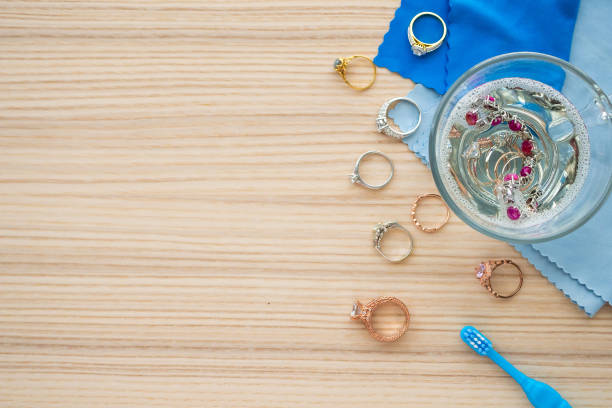
How can I clean gold jewelry without damaging it?
To clean gold jewelry safely, start by preparing a solution of mild dish soap and warm water. Soak the jewelry for about 15-20 minutes to loosen any dirt or grime. After soaking, gently scrub the jewelry with a soft-bristled toothbrush, paying special attention to intricate areas where dirt may be trapped. Rinse thoroughly with clean water and dry with a soft, lint-free cloth. Avoid harsh chemicals, as these can erode the gold over time.
Are there any household items I can use for cleaning gold jewelry effectively?
Yes, several household items can be used to clean gold jewelry. A simple mixture of baking soda and water can create a paste that helps in removing tarnish. Rub the paste gently onto the jewelry with a soft toothbrush, then rinse with water and dry thoroughly. Additionally, a solution of vinegar and salt can also be used to restore shine. Ensure you rinse the jewelry well to remove all residues.
Is it safe to clean gold jewelry with toothpaste?
While toothpaste is a common household cleaning agent, it is generally not recommended for gold jewelry. Toothpaste contains abrasive particles that can scratch and dull the finish of gold over time. It’s safer to use a solution of mild dish soap and water or commercial jewelry cleaning solutions specifically formulated for gold.
Can I clean my gold jewelry with vinegar, and how do I do it?
Yes, vinegar can be used to clean gold jewelry. To clean with vinegar, mix it with equal parts of water, and add a pinch of salt for better cleaning action. Soak the jewelry in the solution for a few minutes, then scrub gently with a soft-bristled brush. Rinse thoroughly with clean water to remove any acidic residue and dry with a soft cloth.
How often should I clean my gold jewelry to maintain its shine?
It is advisable to clean your gold jewelry every few weeks to maintain its shine and appearance, especially if you wear it regularly. Frequent cleaning prevents buildup of dirt and oils that can dull its shine. However, be mindful not to over-clean, as too much scrubbing can cause wear over time. For pieces worn only occasionally, cleaning every few months should suffice.
How can I ensure my gold jewelry looks shiny and new after cleaning it at home?
To keep your gold jewelry looking shiny and new, start by preparing a gentle cleaning solution using warm water and mild dish soap. Soak your jewelry in this solution for about 15-20 minutes to loosen any dirt and grime. After soaking, gently scrub your pieces with a soft-bristle toothbrush, paying extra attention to detailed areas. Rinse the jewelry under warm running water to remove any soap residue and then dry it thoroughly with a soft, lint-free cloth. For an additional shine, you can buff your gold jewelry with a jewelry polishing cloth specifically designed for gold, which will bring out the luster and help maintain its gleam. Avoid using harsh chemicals or abrasive materials, as they may damage the gold. Always store your jewelry separately in a fabric-lined box or pouch to prevent scratches.
